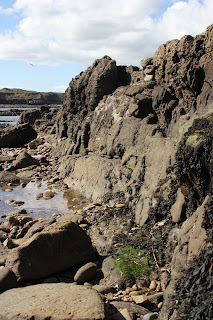History:
The lighthouse and adjacent keepers' cottages were built in 1898 by the John Miller company of Tynemouth, using 645 blocks of stone and 750,000 bricks. It was built on the site of an 11th-century monastic chapel, whose monks maintained a lantern on the tower to warn passing ships of the danger of the rocks. The lamp was powered by paraffin, and was not electrified until 1977, St Mary's was by then the last Trinity House lighthouse lit by oil.
Decommissioning:
The lighthouse was decommissioned in 1984 (just two years after its conversion to automatic operation). At the time, its fine first-order fresnel lens was removed by Trinity House and put on display in their museum in Penzance. A few years later, St Mary's was opened as a visitor attraction by the local council. In place of the original, Trinity House offered a smaller optic from their decommissioned lighthouse at Withernsea, and this can still be seen at the top of the tower. Following closure of the Penzance lighthouse museum, the original lens was returned to St Mary's in 2011 to be put on display.
The lighthouse Today:
Since 2012 St Mary's lighthouse has been grade II listed. While it no longer functions as a working lighthouse, it is easily accessible (when the tide is out) and regularly open to visitors; in addition to the lighthouse itself there is a small museum, a visitor's centre, and a cafe. The cottage was upgraded with a wood pellet boiler in 2014.










